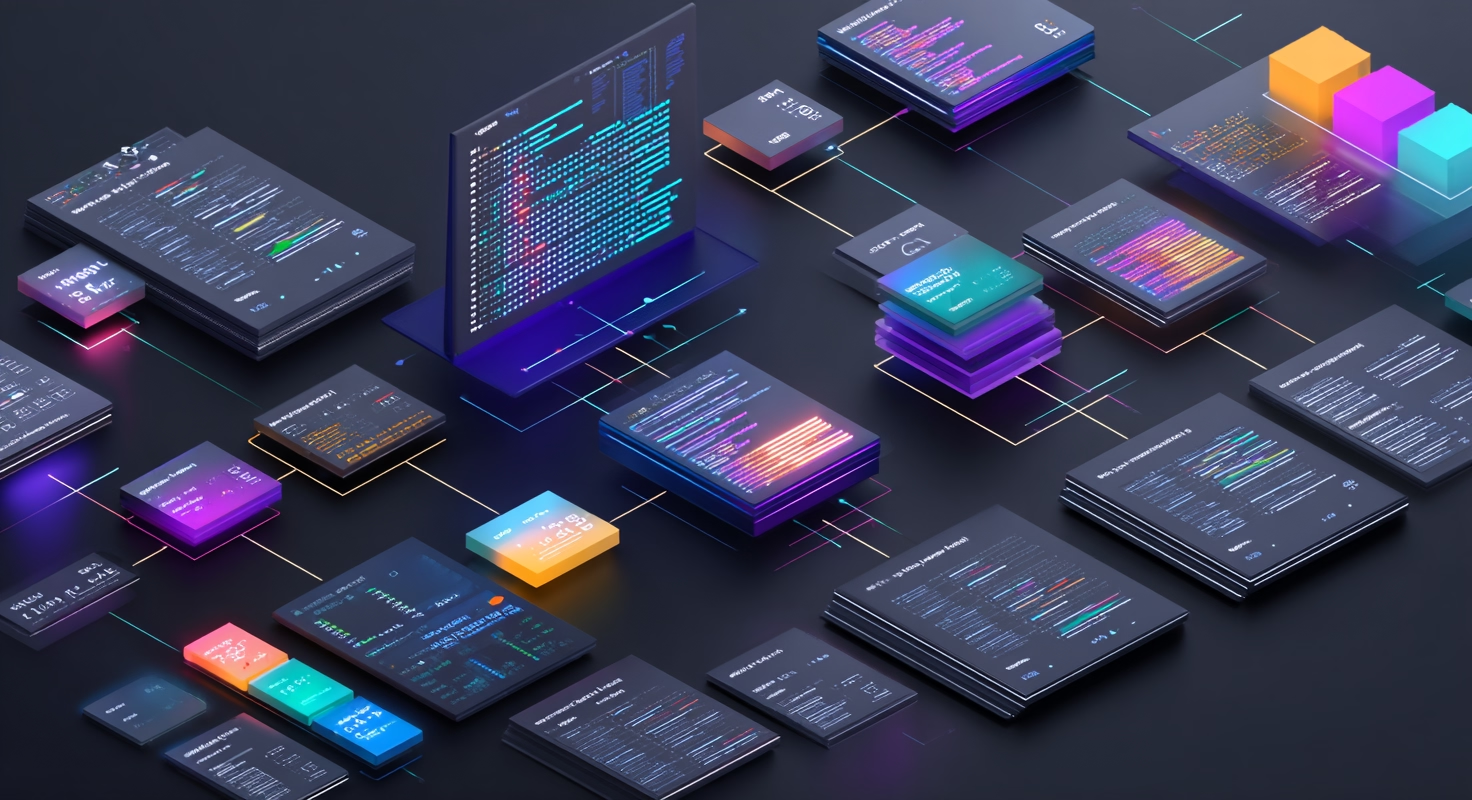Contact centers face increasing demands to scale operations while maintaining service quality. Traditional systems often struggle with efficiency, resulting in high costs and subpar customer experiences.
AI agent architecture offers a solution by automating tasks, improving agent performance, and enhancing customer interactions. With intelligent, scalable systems, businesses can streamline operations and deliver consistent, high-quality service.
Discover how Convin’s AI agent architecture can optimize your contact center, reduce costs, and drive growth. Explore our advanced solutions today.
Understanding AI Agent Architecture: The Backbone of Convin's Solutions
AI Agent Architecture is the framework that defines how intelligent agents interact, process data, and perform tasks within the context of a contact center.
Convin’s AI agent architecture is built on several critical principles—modularity, scalability, and adaptability—enabling businesses to automate operations while providing an enhanced customer experience.
- Efficient Task Management: One of the primary advantages of AI agent architecture is its ability to automate repetitive tasks without compromising the quality of service.
AI agents can handle tasks such as answering frequently asked questions, processing orders, and assisting with troubleshooting.
This leaves human agents free to focus on more complex inquiries, which enhances overall productivity and response times.
- Cost Reduction: By automating customer interactions, Convin’s AI agent architecture reduces the reliance on human agents.
This not only cuts operational costs but also reduces human error, ensuring a consistent level of service across all customer touchpoints.
The automation also reduces the operational burden on your workforce, enabling you to manage high call volumes efficiently.
- Personalized Customer Experiences: Convin’s AI agent architecture is designed to understand customer context, resulting in more personalized interactions.
With access to customer history, real-time queries, and contextual data, AI agents can craft tailored responses that feel more natural and accurate.
This level of personalization increases customer satisfaction and engagement, driving loyalty and trust.
Now that we understand the foundational importance of AI agent architecture, we can take a deeper look at how Convin’s voicebot framework integrates with this architecture, driving greater efficiency and transforming customer interactions.
Leverage Convin's AI solutions to streamline complex workflows!
Convin’s VoiceBot Framework: Driving Efficiency with Advanced Design
The voicebot framework is a critical component of Convin’s AI agent architecture.
A voicebot serves as the primary point of contact for customers, utilizing natural language processing (NLP) and speech recognition to interpret and respond to customer requests.
Convin’s voicebot framework isn’t just about automating responses; it’s about delivering an intelligent, human-like interaction that adapts to customer needs in real time.
- Real-Time Speech Recognition: Convin’s voicebot framework utilizes sophisticated speech recognition technology to accurately interpret and process spoken language.
Whether customers are calling for support or making inquiries, the voicebot can instantly identify and process requests in real time.
The system is trained to recognize a wide range of accents and dialects, ensuring no customer is left behind.
- Seamless Integration with CRM Tools: One of the defining features of Convin’s voicebot framework is its ability to integrate with existing customer relationship management (CRM) systems.
By doing so, the voicebot can access essential customer data—such as purchase history, previous interactions, and specific preferences—to offer more personalized responses.
This integration ensures that every interaction is contextual, resulting in improved outcomes.
- Multilingual Capabilities: Global customer engagement requires language flexibility.
Convin’s voicebot framework is equipped to handle multiple languages, allowing businesses to provide a seamless, localized experience for customers worldwide.
This ensures your contact center can serve international customers without compromising the quality of service.
While the voicebot framework powers the automation of basic tasks, Convin also incorporates a more advanced multi-agent architecture within its AI system design, making the process of handling complex tasks much more efficient.
Automate your customer service tasks with Convin’s AI
This blog is just the start.
Unlock the power of Convin’s AI with a live demo.

Multi-Agent Architecture in Convin’s AI System Design
Multi-agent architecture is a crucial part of Convin’s AI system design. It enables multiple agents, each with specialized skills, to collaborate and solve problems in a way that single-agent systems cannot.
By dividing tasks across multiple agents, this architecture ensures higher reliability, flexibility, and scalability, are key factors for contact centers aiming to grow while maintaining operational efficiency.
How Multi-Agent Architecture Enhances Flexibility
- Collaborative AI Agents: In a multi-agent architecture, different agents are specialized for specific tasks.
For instance, one agent might handle customer inquiries related to billing, while another manages technical support requests.
This specialization enables each agent to focus on its strengths, thereby increasing efficiency and reducing error rates.
The collaboration between these agents yields better problem-solving outcomes, as each agent brings its expertise to bear on a specific task.
- Real-Time Task Distribution: The multi-agent architecture in Convin’s system distributes tasks in real time, ensuring that no agent becomes overwhelmed with requests.
For example, if one agent is occupied with a complex query, the system automatically redirects simpler tasks to other agents.
This dynamic distribution ensures a smooth flow of operations and faster response times.
- Tailored Customer Interactions: Each agent in the multi-agent network has access to specialized knowledge and data, allowing them to respond more effectively.
Whether it’s solving technical issues, processing payments, or assisting with product inquiries, the AI agents can be trained to handle a wide range of requests with precision and contextual understanding.
Benefits of Multi-Agent Networks in AI System Design
- Enhanced Reliability: The architecture ensures that if one agent encounters an issue, others can continue processing tasks without interruption.
This reduces the risk of system failures and downtime, which is crucial for businesses that rely on 24/7 support.
- Scalable Operations: As your business expands, the multi-agent architecture easily adapts to handle growing customer demands.
Additional agents can be integrated into the system without disrupting existing workflows, ensuring seamless scalability and continuity.
- Faster Problem-Solving: By allowing multiple agents to operate simultaneously, multi-agent networks expedite problem resolution.
Whether agents are collaborating on a complex issue or independently handling simpler tasks, the system’s overall response time improves significantly.
Agentic Architecture for Contact Centers
The concept of agentic architecture refers to the systematic design and organization of AI agents that work together to perform complex tasks within a contact center.
The key to building a successful agentic architecture is ensuring that agents collaborate effectively, which is made possible through the design of agent networks and modular AI systems.
Convin’s architecture is tailored to support these elements, enhancing overall system performance and ensuring scalability.
- Agent Network Design: The agent network design forms the backbone of Convin’s agentic architecture, enabling various AI agents to interact seamlessly with one another.
Each agent has their specific role and expertise, ranging from handling customer queries to resolving technical issues.
These agents are interconnected, allowing them to collaborate on tasks and ensuring that, regardless of the complexity of the request, the right agent is always available to respond.
The design also ensures that resources are efficiently allocated and tasks are executed without delay.
- Architecture Diagram of an AI Agent: An architecture diagram of an AI agent visually represents the interconnectedness of the agents within the system.
It showcases how individual agents are structured, their communication pathways, and the flow of data across the network.
By providing a clear blueprint of how AI agents operate together, the diagram helps organizations understand the scalability and flexibility of their system.
It also highlights potential areas for improvement or expansion, ensuring that businesses can continually optimize their AI systems for maximum effectiveness.
- Modular AI Systems: Modular AI systems are designed to enhance flexibility and scalability within the agentic architecture.
These modular systems enable businesses to tailor their AI agent networks by adding or removing modules according to their specific needs.
Whether it’s integrating a new task-handling agent or adding a specialized feature, the system's modular nature ensures that it remains adaptable as the business evolves.
This architecture enables easier system scaling, whether you're expanding the range of services you offer or simply seeking to increase your processing capacity.
With the flexibility and efficiency provided by multi-agent networks, AI system design becomes foundational to scaling operations effectively.
Agentic architecture serves as the cornerstone, allowing businesses to create scalable and efficient contact centers powered by AI.
Through a well-structured agent network design, the integration of modular AI systems, and the straightforward visual guidance provided by the architecture diagram of AI agents, organizations can ensure seamless collaboration among agents, optimize system performance, and enhance overall flexibility.
This intelligent architecture not only drives operational efficiency but also sets the stage for future growth.
It enables contact centers to meet evolving customer demands with ease and effectiveness, making the transition to conversational AI architecture a natural next step for elevating the customer experience through intelligent, natural, and dynamic interactions.
Drive productivity and customer satisfaction with Convin’s voice agents!
Conversational AI Architecture for Seamless Interactions
Conversational AI allows machines to engage in natural, human-like conversations with customers.
Convin’s conversational AI architecture is designed to handle complex dialogues, understand context, and provide personalized responses that mimic the experience of interacting with a human agent.
By integrating conversational AI, Convin’s system enables customers to easily engage with businesses and receive the assistance they need quickly and efficiently.
The Role of Conversational AI in Customer Service
- Personalized Conversations: Unlike traditional automated systems, conversational AI adapts to each customer’s unique needs and preferences.
By using data from past interactions and real-time context, the AI can personalize responses, making each conversation feel more relevant and human-like.
- Context-Aware Responses: Conversational AI doesn’t just respond to keywords; it understands the context of the entire conversation.
This allows it to address complex questions, resolve issues more efficiently, and provide a more satisfying experience for the customer.
- Improved Decision-Making: The AI can analyze vast amounts of data in real time, providing agents with the best possible answers.
This ability to make quick, data-driven decisions ensures that customers receive accurate and relevant solutions, enhancing overall service quality.
Key Benefits of Conversational AI in Contact Centers
- Increased Customer Engagement: By providing natural, responsive interactions, conversational AI engages customers more effectively than traditional bots, which improves overall customer satisfaction.
- 24/7 Availability: Conversational AI enables businesses to support customers around the clock, regardless of time zone. This ensures that customers can always reach out and receive immediate assistance, improving accessibility and engagement.
- Valuable Insights: Every conversation with an AI agent generates useful data. These insights can be analyzed to improve future interactions, helping businesses fine-tune their customer service strategies over time.
In summary, conversational AI is a game-changer for contact centers, but when combined with Convin’s overall AI agent architecture, it delivers unparalleled performance, reliability, and scalability.
Let’s now look at how all of this comes together to form a future-ready contact center.
Future-proof your contact center with Convin’s AI agent architecture
Embracing AI Agent Architecture for Future-Ready Contact Centers
In conclusion, Convin’s AI agent architecture provides the foundation for contact centers to streamline operations, reduce costs, and deliver high-quality customer experiences.
By combining modular AI systems, multi-agent networks, and advanced voicebot frameworks, Convin enables businesses to scale their operations effectively while maintaining personalized service at every touchpoint.
The integration of these elements allows for seamless automation, intelligent task distribution, and real-time adaptability, positioning your contact center to meet the challenges of the future.
As customer expectations continue to evolve, businesses must embrace intelligent solutions that not only automate processes but also improve customer interactions. Convin’s architecture is built for the long term, with the flexibility to adapt to changing needs and the scalability to grow alongside your business.
By leveraging this robust AI agent architecture, contact centers can enhance operational efficiency, reduce human error, and ensure a smooth, engaging experience for customers, ultimately driving loyalty and growth in an increasingly competitive landscape.
Improve customer interactions with Convin’s advanced AI Phone calls!
Frequently Asked Questions
- What does LLM stand for in AI?
LLM stands for Large Language Model in AI. It refers to a type of deep learning model designed to understand and generate human-like text based on large datasets. LLMs power advanced conversational agents, helping businesses enhance their customer service automation by developing more accurate and natural responses.
- What is an LLM architecture?
LLM architecture refers to the underlying structure of Large Language Models (LLMs) that allows them to process, learn, and generate human-like language. This architecture utilizes neural networks, particularly transformer models, to analyze vast amounts of text data and comprehend context, making it essential for tasks such as chatbots, virtual assistants, and content generation.
- What is cognitive AI architecture?
Cognitive AI architecture is designed to mimic human thought processes, combining various AI techniques, including natural language processing (NLP), machine learning, and data analysis, to enable machines to reason, learn, and adapt over time. This architecture enables AI systems to make informed decisions, solve complex problems, and interact with users in a more intelligent and human-like manner.
- Who are Convin’s multi-agent competitors?
Convin’s multi-agent competitors include companies that offer similar AI-driven solutions for contact centers, such as Nuance Communications, Google Cloud AI, and Five9. These companies provide multi-agent systems that automate customer service tasks, utilizing AI agents to handle complex queries and improve operational efficiency in customer interactions.



.avif)




.avif)